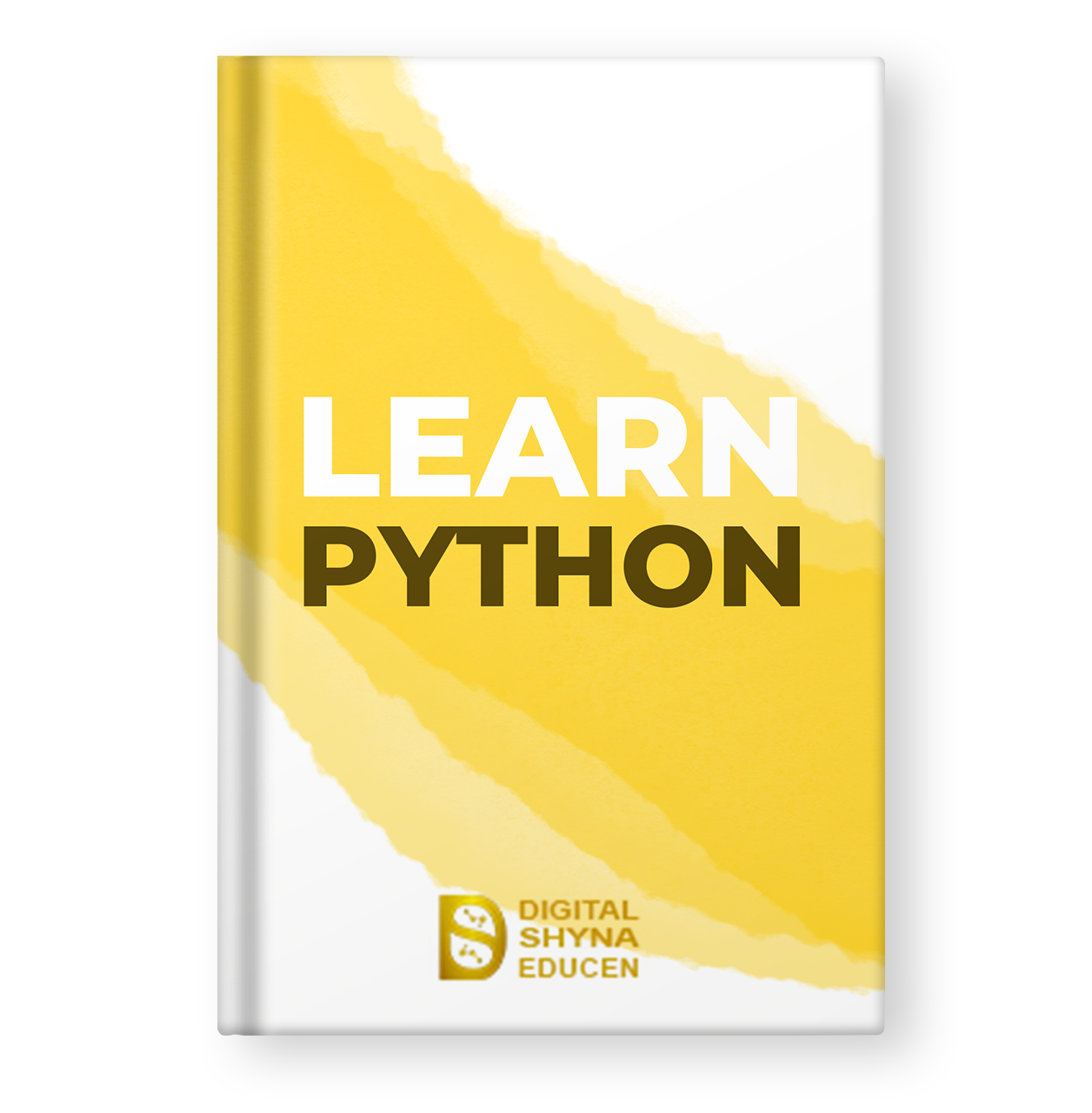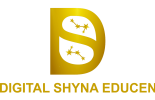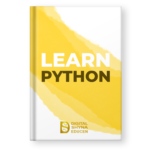Become A Professional in PYTHON
In a world where everything is turning technical and technological by each passing day, the importance of learning how to code is increasing at an exponential rate. However, with the complications involved in most coding languages, most people back out from learning how to code. But Python is an exceptional coding language. Not only is it comprised of pretty simple syntax that makes it easier to learn and implement, but it’s vast series of applications make it one of the most sought-after languages. Digital Shyna Educen starts with an python for beginners and then moves on to a higher and more advanced version of Python. With each lesson full of realistic examples, we make sure each step towards mastering Python is effortless and filled with easy learning techniques.

Course Modules
- Python Overview
- Python Basics
- Python Software and IDE’S
- Variables
- Python Tokens
- Python Standard Datatypes
- Collections
- Python Program Flow
- Classes Objects in Python
- OOP’S Concept in Python
- File Handling in Python
- Exceptional Handling in Python
- Frameworks Vs Packages
- The Import Statement
- Panda and Numpy
- Python for DataScience
- Python with Django
- Python SQL Database Access
- Threads Essential
- Accessing API Essential

Intro on Modules
1. Python Overview: Python is a general-purpose coding language—which means that, unlike HTML, CSS, and JavaScript, it can be used for other types of programming and software development besides web development.
Python can be used for things like:
• Back end (server-side) web and mobile app development
• Desktop app and software development
• Processing big data and performing mathematical computations
• Writing system scripts (creating instructions that tell a computer system to “do” something).
2. Python Basics: Python is a general-purpose object-oriented programming language with high-level programming capabilities. Python is a programming language that includes features of C and Java. It provides the style of writing an elegant code like C, and for object-oriented programming, it offers classes and objects like Java.
Characteristics of Python:
• Interpreted Language: Python is processed at runtime by Python Interpreter.
• Object-Oriented Language: It supports object-oriented features and techniques of programming.
• Interactive Programming Language: Users can interact with the python interpreter directly for writing programs.
• Easy language: Python is easy to learn language especially for beginners.
• Straightforward Syntax: The formation of python syntax is simple and straightforward which also makes it popular.
• Easy to read: Python source-code is clearly defined and visible to the eyes.
3. Python Software and IDE’S: Downloading and installation process of python in Windows, Unix, Linux and Mac, As code editor is a toll which is used to write, edit and debug the code which is lightweight and can be great for learning. So, with this reasons IDE’S come in (Integrated Development Environment) which understands the code much better way than the text editor. We deal and teach python Real-time IDE’S like Pycharm, Jupiter Notebook, Visual Studio etc.
4. Variables: As python programming language helps the developer to focus on solution rather on writing complex codes. Variables are fundamental concept of python language and python has no command for declaring a variable it is created the moment you assign a value to it. Variables are containers and it is a memory location where you store a value. there are certain rules and regulations to follow while creating it.
5. Python Tokens: Python tokens are very basic component of the source code. Characters are classified into four types and also they describe their functions. It can be Keywords, Literals, Identifiers and Operators.
6. Python Standard Datatypes: Python supports fine standard datatype built-in by default, ie string, integers, list, tuple and dictionaries. Where in integer or numeric type we have int, float, complex and strings are set of characters which are immutable, Tuple are used to store multiple items in a single variable but they are also immutable. Lists are also used to store multiple items in a single variable but list are mutable we can update, delete and add elements. Dictionaries are used to store data values in key: value passes, It is collection which is unordered, mutable and doesn’t allow duplicates.
7. Collections: Collections in Python are containers that are used to store collections of data, ex: list, dict, set, tuple etc. These are built-in collections. Several modules have been developed that provide additional data structures to store collections of data. One such module is the Python collections module. Python collections module was introduced to improve the functionalities of the built-in collection containers.
Collections Module
6 of the most commonly used data structures from the Python collections module are as follows:
• Counter
• Defaultdict
• OrderedDict
• Deque
• ChainMap
• namedtuple ().
8. Python program flow:
A program’s control flow is the order in which the program’s code executes. Control flow statements are required to alter the flow of program execution based on the conditions. The control flow of a Python program is regulated by conditional statements, loops, and function calls.
Below is the list of control flow statements:
• Decision-making statements: if, else, elif
• Looping statements: for, while
• Branching statements: break, continue.
9. Classes Objects in Python:
A class is a code template for creating objects. It is a user-defined blueprint or prototype from which objects are created. Classes provide a means of bundling data and functionality together. Creating a new class creates a new type of object, allowing new instances of that type to be made. In python a class is created by the keyword class.
10. OOP’S concept in Python:
Python is a multi-paradigm programming language. Meaning, it supports different programming approach. It allows us to develop applications using an Object-Oriented approach. One of the popular approaches to solve a programming problem is by creating objects. This is known as Object-Oriented Programming (OOP).
Overview of OOP Terminology:
• Class − A user-defined prototype for an object that defines a set of attributes that characterize any object of the class. The attributes are data members (class variables and instance variables) and methods, accessed via dot notation.
• Class variable − A variable that is shared by all instances of a class. Class variables are defined within a class but outside any of the class’s methods. Class variables are not used as frequently as instance variables are.
• Data member − A class variable or instance variable that holds data associated with a class and its objects.
• Function overloading − The assignment of more than one behaviour to a particular function. The operation performed varies by the types of objects or arguments involved.
• Instance variable − A variable that is defined inside a method and belongs only to the current instance of a class.
• Inheritance − The transfer of the characteristics of a class to other classes that are derived from it.
• Instance − An individual object of a certain class. An object obj that belongs to a class Circle, for example, is an instance of the class Circle.
• Instantiation − The creation of an instance of a class.
• Method − A special kind of function that is defined in a class definition.
• Object − A unique instance of a data structure that’s defined by its class. An object comprises both data members (class variables and instance variables) and methods.
• Operator overloading − The assignment of more than one function to a particular operator.
11. File Handling in Python: The file handling concept has straightened over all programming languages, but implementation is either lengthy or complex, but identically to other topics in python, this concept is also simple and short. In python, there is no need for impoting enternal ibrary to read and write files. Python provides an in-built function for creating, Writing and reading files. You learn here how to open, Create, Append, Read a file, Read a file line by line and different modes of file in Python.
12. Exceptional Handling in Python: Python provides very important feature to handle any unexpected error in your python programs. So, you will see what an exception is and how it is different from a syntax error, You will be also learning about how to raise an exceptions that are raised when your program encounters and error.
13. Frameworks Vs packages:
Frameworks in Python
A framework is a collection of modules or packages which helps in writing web applications. Frameworks automate the common implementation of common solutions which gives the flexibility to the users to focus on the application logic instead of the basic routine processes. Frameworks make the life of web developers easier by giving them a structure for app development. They provide common patterns in a web application that are fast, reliable and easily maintainable.
Top 5 Frameworks in Python:
• Django
• Web2Py
• Flask
• Bottle
• CherryPy
Packages in Python
A package is a collection of Python modules. As our application program grows larger in size with a lot of modules, we place similar modules in one package and different modules in different packages. This makes a project easy to manage and conceptually clear. Similar, as a directory can contain sub-directories and files, a Python package can have sub-packages and modules.
14. The Import Statement:
A module allows you to logically organize your Python code. A module is a Python object with arbitrarily named attributes that you can bind and reference. Simply, a module is a file consisting of Python code. A module can define functions, classes and variables. A module can also include runnable code. Python modules can get access to code from another module by importing the file/function using import. The import statement is the most common way of invoking the import machinery, but it is not the only way.
15. Panda’s and Numpy:
Pandas:
This is one of the best topic to learn pandas in python. Students can also refresh there fundamentals. Pandad ia an open-Sourca, BSD-Licensed Python library which provides high performance, its going to be easy to use in data structures and data analysis tools for the python programming. It presents a diverse range of utilities, ranging from parsing multiple file formats to converting an entire data table into a NumPy matrix array. This makes pandas a trusted ally in data science.
NumPy:
NumPy is an open source Python package for scientific computing. NumPy supports large, multidimensional arrays and matrices. NumPy is written in Python.. NumPy (pronounced /ˈnʌmpaɪ/ (NUM-py) or sometimes /ˈnʌmpi/ (NUM-pee)) is a library for the Python programming language, adding support for large, multi-dimensional arrays and matrices, along with a large collection of high-level mathematical functions to operate on these arrays.
16. Python for DataScience:
Because the language is multifaceted and flexible and has easy readability, Python is an obvious language of choice in the field. However, Python usage is relatively new. As a result, Python libraries such as Pandas (fast, powerful, flexible and easy to use open source data analysis and manipulation tool, built on top of the Python programming language) help individuals clean up data and perform advanced manipulation. The growth of Python in data science has gone hand in hand with that of Pandas, which opened the use of Python for data analysis to a broader audience by enabling it to deal with row-and-column datasets, import CSV files, and much more. While Pandas may be the best-known library, there are hundreds of specialized libraries that serve a similar purpose, such as SymPy (for statistical applications), PyMC (machine learning), matplotlib (plotting and visualization), and PyTables (storage and data formatting). These and other specialized libraries aid in everything from machine learning to data pre-processing to neural networks. One of the main benefits of Python is that its flexible nature enables the data scientist to use one tool every step of the way. Another plus is the large community of data scientists, machine learning experts, and programmers who go out of their way not only to make it easy to learn Python and machine learning but also to provide datasets to test a Python student’s mastery of their newfound skills. Whether you are a social scientist who needs Python for advanced data analysis or an experienced developer interested in a growing field, a part of the Python community is ready to help you out.
17. Python with Django:
Django is a high-level Python web framework that enables rapid development of secure and maintainable websites. Built by experienced developers, Django takes care of much of the hassle of web development, so you can focus on writing your app without needing to reinvent the wheel. It is free and open source, has a thriving and active community, great documentation, and many options for free and paid-for support.
Django helps you write software that is:
• Complete
• Versatile
• Secure
• Scalable
• Maintainable
• Portable.
18. Python SQL Database Access:
Database is a collection of tables related to each other via columns. For most real-world projects, a database is a must. We can use SQL (Structured Query Language) to create, access, and manipulate data. For database programming, Python supports many database servers- MySQL, Oracle, PostgreSQL, SQLite, Sybase, Microsoft SQL Server, mSQL, Microsoft Access, and many more. It also supports Data Query Statements, Data Definition Language (DDL), and Data Manipulation Language (DML). The standard database interface for Python is Python DB-API.
19. Threads Essential:
A thread in Python can simply be defined as a separate flow of execution. What this simply means that in your program, two different processes will be executed in the same time. One interesting aspect of threading in Python is the fact that, after version 3 multiple threads in Python are not executed at the same time, but they just merely appear to. While it is an amazing feeling to be running two different processes at the same time, one needs to understand that the current version of Python 3 and above is coded in such a way, that only process can be run at any given point in time. One of the most well-known advantages of threading in Python is its ability to provide a gain in design clarity.
20. Accessing API Essential:
Application Programming Interface (API) is a standard that facilitates intercommunication between two or more computer programs. The reason we want to use API is that it is easy to access, and data keeps changing. To interact with an API, specifically a web API in python we can make use of the standard requests module to make the request, because most web service APIs return a response in a format known as JSON (JSON is a way to store data in an organized, logical manner). APIs in Python use Open Notify API (Open Notify is an open source project to provide a simple programming interface for some of NASA’s awesome data).
Batch Schedules
Our Early Morning batch starts from 21st February 2023
| Training Timings | 07:00AM -09:30AM (Mon to Sat) |
| Training Duration | 2 and half Months |
| Internship | Paid |
| Total Course Duration | 2 and half Months |
Batch Schedules
Our Crash course batch starts from 23 January 2023
| Training Timings | 11:00AM -05:00PM (Mon to Sat) |
| Training Duration | 2 Months |
| Internship | 1 Month (Our Students will be working on Live Projects) |
| Internship Timings | 10:00Am to 05:30PM (Mon to Sat) |
| Total Course Duration | 3 Months |
Book Your Slot Now

Dream big, get the skills from the high qualified faculties. Do the job. We emphasize hands-on training, career focused learning and a broad range of credentials with the promise of 100% guaranteed job placement.
Get in Touch!
- info@digtalshyna.com
-
+91 7416 961 857
+91 8187 025 736
© 2019-2024 | Digital Shyna Educen, All rights reserved.


